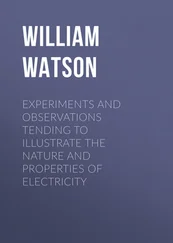Mark Changizi - Harnessed - How Language and Music Mimicked Nature and Transformed Ape to Man
Здесь есть возможность читать онлайн «Mark Changizi - Harnessed - How Language and Music Mimicked Nature and Transformed Ape to Man» весь текст электронной книги совершенно бесплатно (целиком полную версию без сокращений). В некоторых случаях можно слушать аудио, скачать через торрент в формате fb2 и присутствует краткое содержание. Год выпуска: 2011, Издательство: Perseus Books Group, Жанр: Старинная литература, на английском языке. Описание произведения, (предисловие) а так же отзывы посетителей доступны на портале библиотеки ЛибКат.
- Название:Harnessed: How Language and Music Mimicked Nature and Transformed Ape to Man
- Автор:
- Издательство:Perseus Books Group
- Жанр:
- Год:2011
- ISBN:нет данных
- Рейтинг книги:5 / 5. Голосов: 1
-
Избранное:Добавить в избранное
- Отзывы:
-
Ваша оценка:
- 100
- 1
- 2
- 3
- 4
- 5
Harnessed: How Language and Music Mimicked Nature and Transformed Ape to Man: краткое содержание, описание и аннотация
Предлагаем к чтению аннотацию, описание, краткое содержание или предисловие (зависит от того, что написал сам автор книги «Harnessed: How Language and Music Mimicked Nature and Transformed Ape to Man»). Если вы не нашли необходимую информацию о книге — напишите в комментариях, мы постараемся отыскать её.
Harnessed: How Language and Music Mimicked Nature and Transformed Ape to Man — читать онлайн бесплатно полную книгу (весь текст) целиком
Ниже представлен текст книги, разбитый по страницам. Система сохранения места последней прочитанной страницы, позволяет с удобством читать онлайн бесплатно книгу «Harnessed: How Language and Music Mimicked Nature and Transformed Ape to Man», без необходимости каждый раз заново искать на чём Вы остановились. Поставьте закладку, и сможете в любой момент перейти на страницу, на которой закончили чтение.
Интервал:
Закладка:
Whereas our discussion so far has concerned rhythm and beat, which do not depend on the listener’s position, the upcoming sections concern pitch and loudness, each of which depends crucially on the location of the listener. Music with only a beat and a rhythm is a story of human behavior, but without any particular viewpoint. In contrast, music with pitch and loudness modulations puts the listener at a fixed viewpoint (or listening point) in the story, as the fictional mover changes direction and proximity to the listener. These are the mover’s kinematics, and the rest of this chapter examines how music tells stories about the kinematics.
Motorcycle Music
Next time you’re on the highway at 70 mph next to a roaring Harley, roll down your window and listen (but do not breathe!). I did this just the other day, and was struck by something strange about how the chopper sounded. The motorcycle’s “footsteps” were there, namely the sounds made by the bike’s impacts directly on the asphalt as it barreled over crevices, crags, and cracks. The motorcycle’s “banging gangly” sounds were also present—the sounds made by the bike’s parts interacting with one another, be they moving parts in the engine or body parts rattling due to engine or road vibrations. And the bike’s exhaust pipe also made its high-frequency vroom (not quite analogous to a sound made by human movers). These motorcycle sounds I heard were characterized not only by their rhythm, but also by the suite of pitches among the rings of these physical interactions: the bike’s “chords.” These rhythm and chord sounds informed me of the motorcycle’s “state”: it is a motorcycle; it is a Harley; it is going over uneven ground; it is powerful and rugged; it needs a bath; and so on. Rhythm and beat (and the chords with which they seem inextricably linked), the topics of much of this chapter thus far, are all about the state of the mover—the nature of the mover’s gait, and the emotion or attitude expressed by that manner of moving about.
What, then, was so strange about the motorcycle sounds I heard while driving alongside? It was that the motorcycle’s overall pitch and loudness were constant . In most of my experiences with motorcycles, their pitch and loudness vary dynamically. This is because motorcycles are typically moving relative to me (I never ride them myself), and consequently they are undergoing changes in pitch due to the Doppler effect, and changes in loudness due to changing proximity. These pitch and loudness modulations give away the action , and that was what was missing: the motorcycle had attitude but no action.
Music gets its attitude from the rhythm and beat, but when music wants to tell a story about the mover in motion —the mover’s kinematics—music breaks out the pitch and becomes melodic, and twiddles with the volume and modulates the loudness. The rest of this chapter is about the ecological origins of melody and loudness. We will begin with melody, but before I begin to defend what I think musical melodic pitch means, we need to overcome a commonly held bias—encoded in the expressions “high” and “low notes”—that musical pitch equates with spatial position.
Why Pitch Seems Spatial
Something is falling from the sky! Quick, what sound is it making? You won’t be alone if you feel that the appropriate sound is one with a falling pitch (possibly also with a crescendoing loudness). That’s the sound cartoons use to depict objects falling from overhead. But is that the sound falling objects really make, or might it be just a myth?
No, it’s not a myth. It’s true. If a falling object above you is making audible sounds at all (either intrinsically or due to air resistance), then its pitch will be falling as it physically falls for the same reason passing trains have falling pitch: falling objects (unless headed directly toward the top of your head) are passing you, and so the Doppler effect takes place, like when a train passes you. Falling objects happen to be passing you in a vertical direction rather than along the ground like a train, but that makes no difference to the Doppler effect. Because falling objects have falling pitch, we end up associating greater height with greater pitch. That’s why, despite greater sound frequencies not being “higher” in any real sense, it feels natural to call greater frequencies “higher.” Pitch and physical height are, then, truly associated with one another in the world.
But the association between pitch and physical height is a misleading association, not indicative of an underlying natural regularity. To understand why it is misleading, let’s now imagine, instead, that an object resting on the ground in front of you suddenly launches upward into the sky. How does its pitch change? If it really were a natural regularity that higher in the sky associates with higher pitch, then pitch should rise as the object rises. But that is not what happens. The Doppler effect ensures that its pitch actually falls as it rises into the sky. To understand why, consider the passing train again, and ask what happens to its pitch once it has already reached its nearest point to you and is beginning to move away. At this point, the train’s pitch has already decreased from its maximum, when it was far away and approaching you, to an intermediate value, and it will continue to decrease in pitch as it moves away from you. The pitch “falls” or “drops,” as we say, because the train is directing itself more and more away from you as it continues straight, and so the waves reaching your ears are more and more spread out in space, and thus lower in frequency. (In the upcoming section, we will discuss the Doppler effect in more detail.) An object leaping upward toward the sky from the ground is, then, in the same situation as the train that has just reached its nearest point to you and is beginning to go away. The pitch therefore drops for the upward-launching object. If rocket launches were to be our most common experience with height and pitch, then one would come to associate greater physical height with lower pitch, contrary to the association people have now. But because of gravity, objects don’t tend to launch upward (at least they didn’t for most of our evolutionary history), and so the association between physical height and low pitch doesn’t take hold. Objects do fall, however (and it is an especially dangerous scenario to boot), and so the association between physical height and “high” pitch wins. Thus, greater height only associates with “higher” pitch because of the gravitational asymmetry; the fundamental reason for the pitch falling as the object falls is the Doppler effect, not physical height at all. Pitch falls for falling objects because the falling object is rushing by the listener, something that occurs also as the train comes close and then passes.
Falling objects are not the only reason we’re biased toward a spatial interpretation of pitch (i.e., an interpretation that pitch encodes spatial position or distance). Our music technology—our instruments and musical notation system—accentuates the bias. On most instruments, to change pitch requires changing the position in space of one’s hands or fingers, whether horizontally over the keys of a piano, along the neck of a violin, or down the length of a clarinet. And our Western musical notation system codes for pitch using the vertical spatial dimension on the staff—and, consistent with the gravitational asymmetry we just discussed, greater frequencies are higher on the page. The spatial modulations for pitch in instrument design and musical notation are very useful for performing and reading music, but they further bang us over the head with the idea that pitch has a spatial interpretation.
Читать дальшеИнтервал:
Закладка:
Похожие книги на «Harnessed: How Language and Music Mimicked Nature and Transformed Ape to Man»
Представляем Вашему вниманию похожие книги на «Harnessed: How Language and Music Mimicked Nature and Transformed Ape to Man» списком для выбора. Мы отобрали схожую по названию и смыслу литературу в надежде предоставить читателям больше вариантов отыскать новые, интересные, ещё непрочитанные произведения.
Обсуждение, отзывы о книге «Harnessed: How Language and Music Mimicked Nature and Transformed Ape to Man» и просто собственные мнения читателей. Оставьте ваши комментарии, напишите, что Вы думаете о произведении, его смысле или главных героях. Укажите что конкретно понравилось, а что нет, и почему Вы так считаете.












